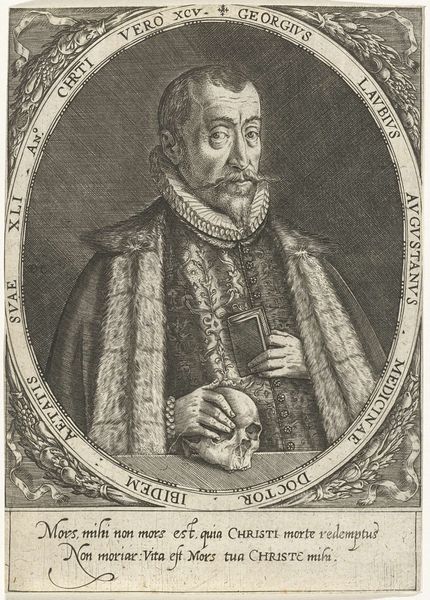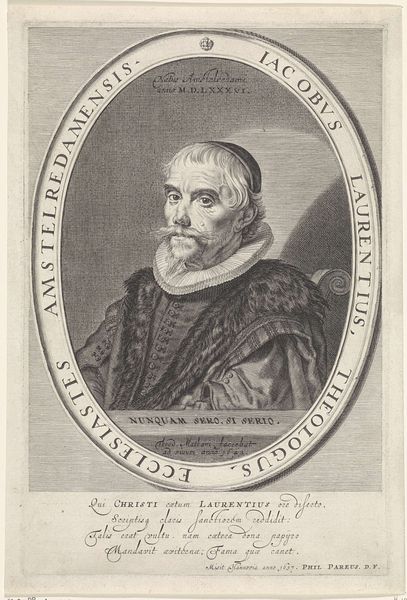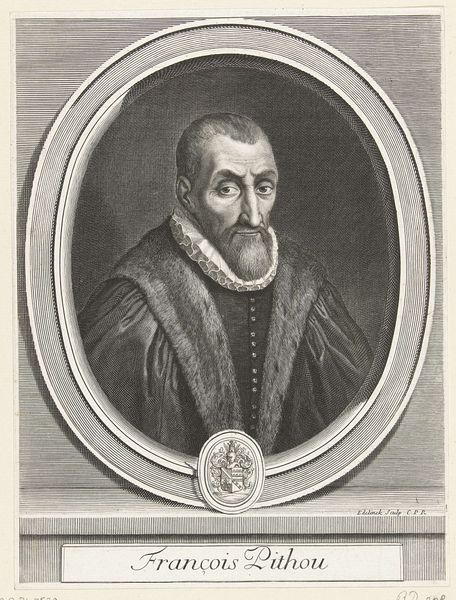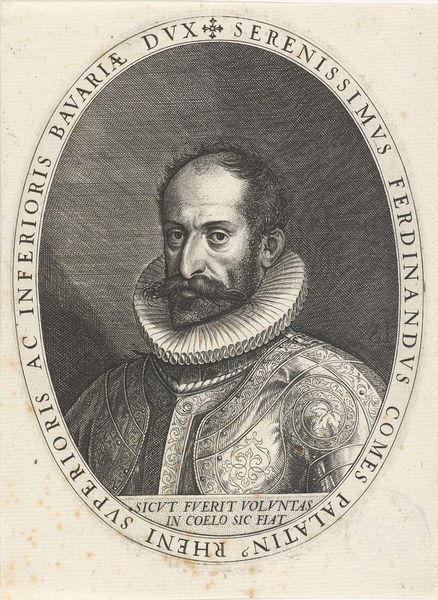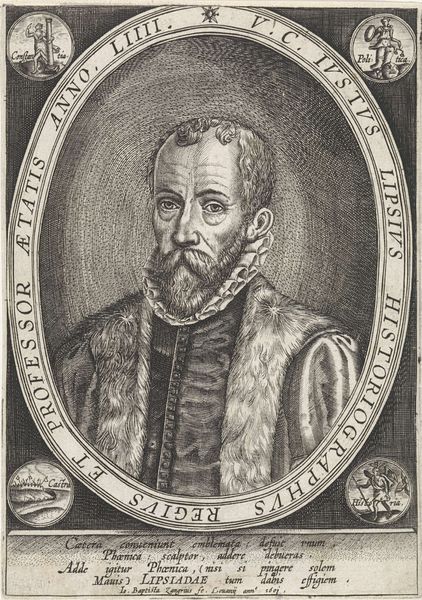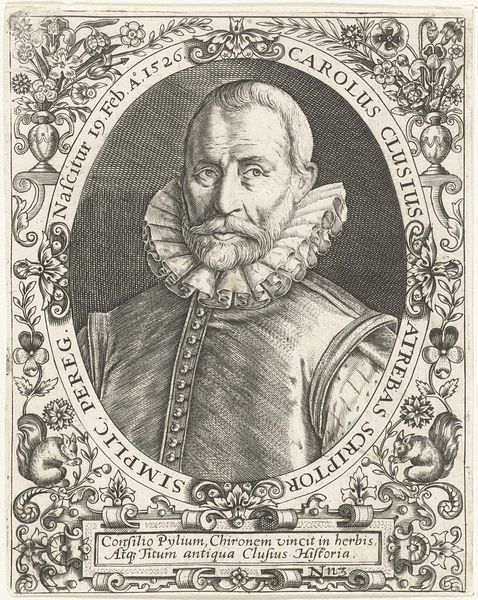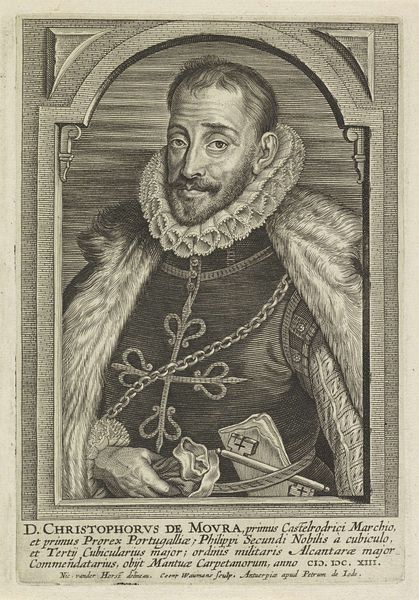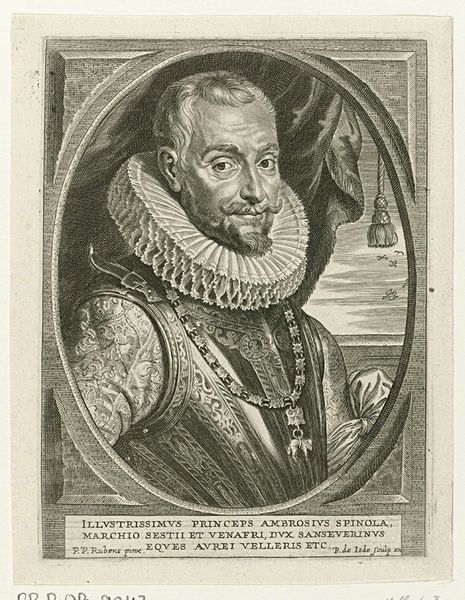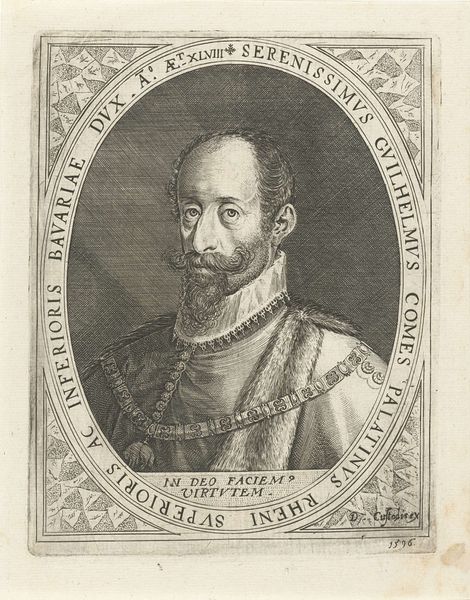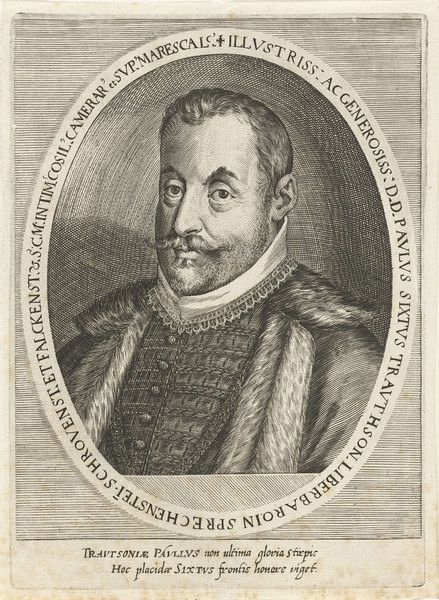
Portret van Frederik baron van Limburg op 57-jarige leeftijd 1600 - 1604
0:00
0:00
dominicuscustos
Rijksmuseum
drawing, print, intaglio, engraving
#
portrait
#
drawing
#
baroque
# print
#
intaglio
#
old engraving style
#
engraving
#
historical font
Dimensions: height 167 mm, width 118 mm
Copyright: Rijks Museum: Open Domain
Curator: Let's turn our attention to this engraving currently held at the Rijksmuseum. It's entitled "Portret van Frederik baron van Limburg op 57-jarige leeftijd," created sometime between 1600 and 1604 by Dominicus Custos. Editor: The detail is exquisite, especially the fine lines used to render the fur stole and that rather elaborate ruff. It’s quite austere but still commanding, a real presence emerges from the print. Curator: Indeed. Custos, active in Augsburg, Germany, produced numerous portrait engravings. These images weren’t simply about likeness; they were carefully constructed statements about status, lineage, and power within the Holy Roman Empire. Editor: Absolutely. You can see it in the formality of the pose, and in the overall structure: the central oval cartouche with the inscribed Latin text surrounding it. Each compositional element functions symbolically to create a visual rhetoric of authority. Even the font evokes that era! Curator: And Baron van Limburg held significant political offices within the Holy Roman Empire. Prints like these served to circulate his image and solidify his authority, not just amongst the elites but also amongst a wider public able to acquire them. Think of them as early forms of political propaganda, establishing connections, influence and documenting an identity for prosperity. Editor: The use of line and shadow really emphasizes his features, bringing a starkness and weightiness that feels very intentional. The light falls just so as to accentuate his strong jaw and direct gaze, suggesting resolve. Curator: Note also the inscription “DEVS PROVIDEBIT” – God will provide. This reflects the religious and political anxieties of the time, as well as the Baron’s declared reliance on divine authority amidst those anxieties. Editor: Looking closely, one notices subtle shifts in hatching indicating both depth and a variety of textures that animate what could otherwise be a rather static image. The engraver’s skillful use of those technical means shapes our understanding of character. Curator: By understanding how images like these functioned, we gain a deeper insight into the social and political dynamics of 17th-century Europe. Editor: A great artwork can reveal not just a face, but an era. It truly speaks for itself.
Comments
No comments
Be the first to comment and join the conversation on the ultimate creative platform.
